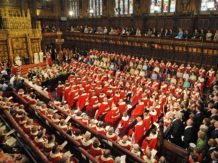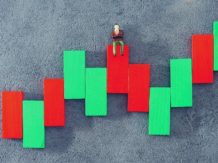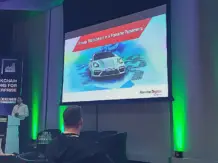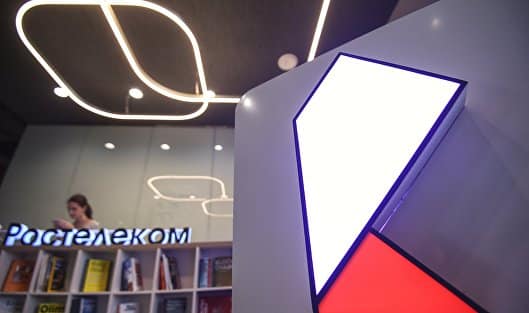Conducting polls and voting on the blockchain is one of the promising areas of technology development. Why are all the attempts so far remain fragmented and incomplete?
Interest in the use of the blockchain outside the cryptocurrency industry for the first time was widely manifested in 2016. It was then that the first corporate blockchain consortia, R3 and Hyperledger, were created, giants from different areas: Microsoft, IBM, SAP, Maersk and many others became very interested in technology. There was, in fact, a new direction in the development of data storage technologies – distributed registries (DLT).
The first experiments with the blockchain did not bring any stunning results, and in 2017-2018 the public’s attention was focused on the cryptocurrency hyip that ended in the fall of the main cryptocurrency quotes by 80-90% of the historical maximums.
Recently, interest in the blockchain has been revived, but the approach has become more balanced and no longer has a desire to use the “blockchain for the blockchain” as another fashionable technology. Now, developers are evaluating the real effectiveness of blockchain implementation in areas where it is really useful.
Blockchain as a distributed registry
Critics of the blockchain as a key problem of this technology usually distinguish two aspects: low bandwidth (for most cryptocurrencies – no more than a few dozen transactions per second), and the constantly growing volume of the local database, which in the most loaded blockchains (for example, Ethereum) is already measured in terabytes.
The bandwidth problem is actually solved in blockchains of a new generation: EOS, Tron, Cardano, etc. They are able to process up to several thousand transactions per second, which is more than enough for a distributed registry. At the same time, for storing limited amounts of textual information, of which the majority of accounting databases consist, the amount of information in the blockchain is growing rather slowly.
Thus, the use of the blockchain as a distributed registry can be quite effective based on existing solutions. These include state registries, control of intellectual property, tracking of supply chains, storage of medical data, etc. Another promising direction is the conduct of polls and surveys using a distributed registry.
Voting on the blockchain
Conducting various polls with the help of the blockchain, and first of all political ones, is not a new idea. The first burst of activity on the use of the blockchain in elections occurred in 2016, when the benefits of the new technology were appreciated.
Back in November 2015 in the USA, the company Blockchain Technologies Corp proposed
replace outdated voting machines with an electronic system on the blockchain, but the initiative did not receive support. In the presidential election of 2016, both major US political parties – Republican
and Democratic
– They became interested in the blockchain, and the company Follow My Vote tried to conduct a parallel vote count in the blockchain. The study of this topic was conducted by members of the European Parliament.
In Russia, at that time, there was also an offer to use the blockchain in the Moscow platform Active Citizen for voting in Moscow on urban politics and land improvement. Unlike many ideas that remained on paper, the project successfully developed and at the end of 2017, the transfer of the electronic referendum system to the blockchain began.
In 2018-2019, the blockchain is increasingly entering political life around the world. The US state of West Virginia launched a mobile application for voting on the blockchain during the elections to the state Senate, and this year launched a similar initiative
The city of Denver, the capital of the state of Colorado. The Swiss canton of Zug, famous for its “Cryptodolina”, introduced last summer
electronic voting system on the blockchain.
Particular attention to the blockchain was shown by the governments of Asian countries. South Korean Election Commission, with government support, conducts testing
mobile application voting systems. And the country’s capital, Seoul, embeds a voting system into the blockchain-system ICON, used to provide the residents of the city with a full range of public services.
Last fall, the Democratic Party of Thailand held
using the blockchain’s internal elections (primaries), and based on a successful experiment in the country, it is planned to introduce technology in elections at all levels. And the Japanese “scientific city” Tsukuba used the blockchain to vote residents on the choice of state programs for the development of infrastructure.
In Russia, where the negative attitude of the authorities to cryptocurrencies has already become customary, the blockchain, however, is finding more and more applications, including in public life. CEC Chairperson Ella Pamfilova admits
in the future, the holding of presidential and parliamentary elections using the blockchain. In December last year, in Saratov, the polys blockchain system developed by Kaspersky Lab was used in the elections to the “youth parliament”. The Growth Party, known for supporting technical innovations, held an interparty vote on the blockchain at a meeting of the Federal Political Council. The pilot project of electronic voting on the blockchain will also be involved in the upcoming elections to the Moscow City Duma.
Thus, the prospects for using the blockchain in various types of polls are becoming more and more definite. But one should not lose sight of the possibility of its use in related areas, such as organizing and conducting public opinion polls.
Blockchain polls: empty niche
Despite the popularity of the blockchain in the field of voting, technology still has little demand in polling. Perhaps the only example of conducting a large-scale polling with the help of the blockchain is the VTsIOM experiment during the presidential elections of March 18, 2018 in Russia. At that time, the results of the survey according to exit polls, in which 162,601 people took part, were saved on the blockchain of Ethereum. But in other polls VCOM blockchain is no longer used.
The use of blockchain in polls can be beneficial to all participants in the process – both from a technical and economic point of view.
For companies or public organizations conducting polls, the advantages of the blockchain are indisputable:
- Survey data is unchangeable, so the objectivity of the process can always be confirmed;
- Survey results are publicly available, eliminating the possibility of fakes and distortions.
- Answers to questions are entered by respondents directly and immediately stored in the blockchain, and not processed by intermediaries. This reduces costs and increases confidence in the results.
- It is possible to increase the interest of the audience by offering rewards in tokens for passing surveys.
- The audience for surveys is practically not limited to geographic and political factors.
On the other hand, the use of the blockchain makes participation in polls beneficial for respondents:
- Remuneration in cryptocurrency (tokens) immediately after the vote or the end of the survey, without intermediaries and commissions.
- The opportunity at any time to check your answers and share them. Open access to the results and the general voting process.
- Participate in the survey at a convenient time and from any device.
- No need to trust the organizer, confidence in the safe storage of all results.
- In specialized surveys – an opportunity to earn extra money on your knowledge and correct predictions.
From the above, we can conclude that the blockchain is almost ideal for conducting online surveys. Nevertheless, the situation is quite paradoxical. Despite the obvious advantages of the blockchain for all stakeholders, there are practically no real applications in this market niche. Now we can mention only two projects worthy of attention:
Startup ClearPoll, founded in 2017. It offers users the opportunity to create online voting and participate in them, receiving rewards in tokens. Interestingly, the scheme for storing data from polls and rewards is divided according to different blockchains.
Information on polls is stored on a private blockchain, which is accessible only to developers and users of the project, which raises doubts about the transparency of the system and the immutability of data. Rewards are credited in the ERC-20 standard POLL tokens that apply to the Ethrereum blockchain. Project developers still retain some activity and voting is held on the platform, but in general the project is more likely dead than alive, and the price of the token is slowly but surely decreasing.
Russian-language social network Opinion, specializing in conducting polls and predicting the outcome of various events based on the “wisdom of the crowd.” The system works on the EOS blockchain. The project was launched in early 2019 and continues to evolve.
Polls are implemented in the Opinion system in the form of smart contracts that automatically take into account user responses in the blockchain. Smart contracts distribute remuneration in tokens among users who gave the correct forecast or took part in the survey. The system allocates a pool of tokens automatically or the author of the survey sends a reward from its own funds. Recording results on the blockchain ensures fair distribution of remuneration and protection of user responses against loss or counterfeiting. Social network administrators create a part of the polls on their own to give users the opportunity to earn tokens.
Finally
The current technical level of development of the blockchain allows you to organize
platform for online surveys, polls and forecasting, but this
the niche in the market actually remains not filled. Most projects
are in a protracted development stage, of which many of them are probably
will not come out. But those who manage to gain a foothold in the market and attract an audience have
all chances for successful development.
















